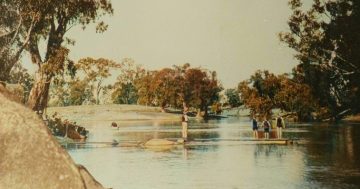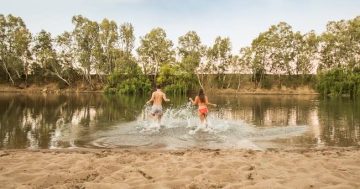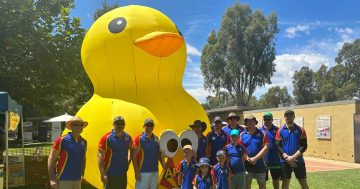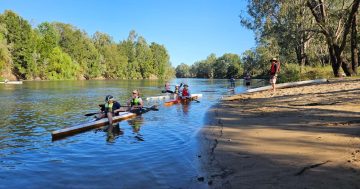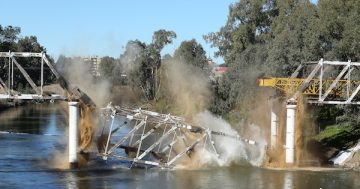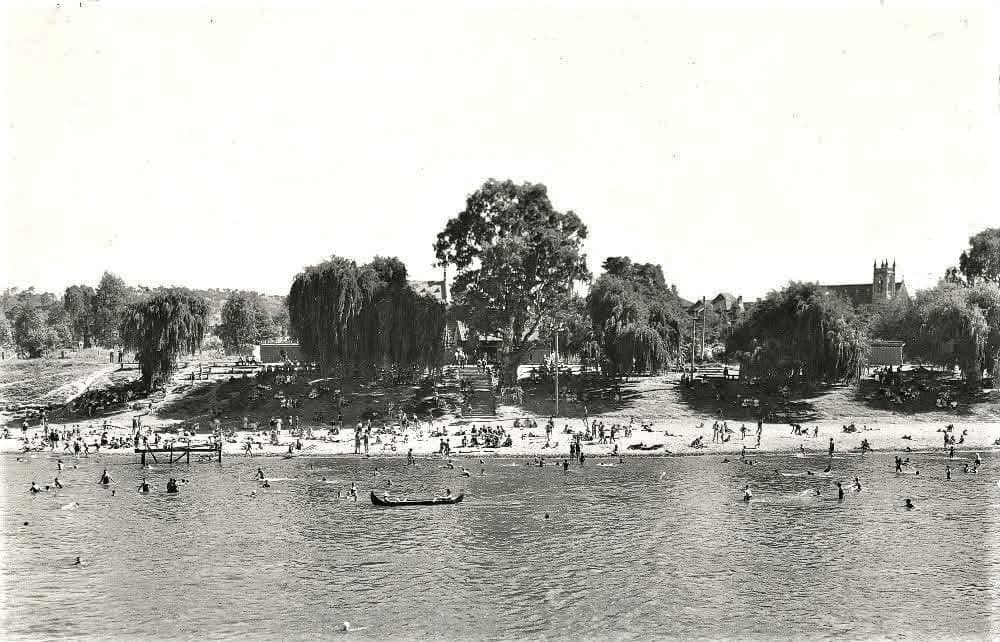
Before the Wagga City Baths opened in 1953, Wagga Beach was the best spot to cool off. Photo: Wagga Wagga & District Historical Society.
Wagga’s greatest asset is undoubtedly the stretch of golden sand on the bend in the Murrumbidgee – a gathering point for generations of bathers, stretching back into time immemorial.
It’s part of the city’s identity and a favourite way for locals to baffle visitors with our 2019 claim to be the nation’s “9th-best beach” and tales of the 5 o’clock wave.
As this photo from the late 1930s captures, the beach and the extensive sandbar were the best spots for a soak on a hot day or for the final destination of a lazy float from somewhere upstream.
Early settler accounts from the likes of James Gormly note that Wiradjuri mob would gather to bathe, fish, trade and perform ceremonies.
As the town of Wagga Wagga began to take shape, the beach’s popularity grew among the European arrivals as men hit the water to wash or cool off and later, once our prudish predilections had begun to fade, women too were allowed to get in on the summer fun.
An article in The Daily Advertiser in November 1927 celebrated a council decision to invest in facilities for bathers and extolled the virtues of the beach and the river.
“It is perhaps only in the summer months that the people realise to the full the inestimable value of the majestic Murrumbidgee, which flows unceasingly and a river, which holds practically no menace except for the foolhardy, and a beach which is safe for children, in such close proximity to the town, are assets the value of which it is almost impossible to estimate,” the reporter gushed.
“The popularity of the beach as a resort is abundantly proved by the large crowds of men, women, and children who daily frequent it during the hot season, while it possesses a powerful appeal to people living in less favored towns who motor in large numbers from as far afield as Temora and Ardlethan, particularly at the weekend.”
The decision had been made to upgrade the “primitive” dressing sheds used by the men of the newly formed Wagga Beach Life Saving Club. The reporter praised their advocacy and looked forward to the establishment of modern men’s and women’s amenities that would “permit people to take advantage of the inestimable boon of river and beach in comfort”.
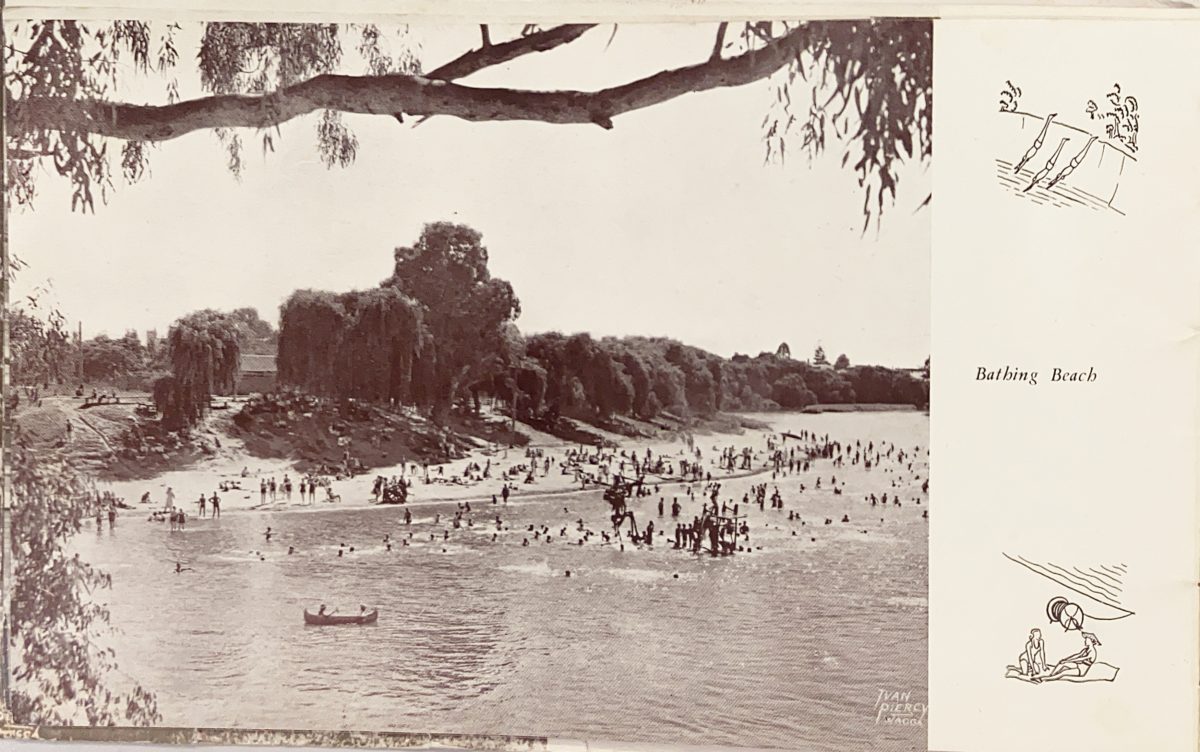
Wagga Beach in 1941 as pictured in the brochure Beautiful Wagga: The Sunshine Capital of the Riverina. Photo: Ivan Piercy.
In addition to patrolling the beach, the lifesaving club taught water safety and hosted events and in November 1943, the Wagga Beach Women’s Life Saving Club was officially established.
When the Wagga City Baths opened in 1953, Wagga Beach’s place as the aquatic focus of the Riverina began to fade, supplanted by tiled pools, lawns, concrete paths and chlorinated water.
The opening of the iconic Wagga Water Wizz and bumper boats briefly revived the beach’s appeal, and families from across the Riverina flocked to the riverside throughout the 1980s. However, not to be outdone, Wagga City Baths again stole the limelight in 1992 and the slide was relocated, expanded and renamed the Rippa Slippa.
Since the turn of the century, Wagga Beach has undergone a slow and steady renaissance. Wagga City Council’s Riverside Strategic Master Plan was unveiled in 2010 with a million-dollar promise to upgrade facilities and public spaces to enable the city to begin to “turn back to the river”.
The $10 million Stage 2 project transformed St Michael’s Oval and the old caravan park site into a spectacular recreation space that includes one of the best adventure play parks in the country.
With the droughts and floods of the past decade now behind us, 2025 is shaping up to be another great year to get down to Wagga Beach and celebrate the “jewel in Wagga’s crown”.







